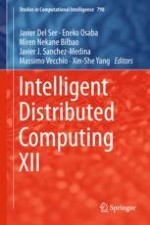This book gathers a wealth of research contributions on recent advances in intelligent and distributed computing, and which present both architectural and algorithmic findings in these fields. A major focus is placed on new techniques and applications for evolutionary computation, swarm intelligence, multi-agent systems, multi-criteria optimization and Deep/Shallow machine learning models, all of which are approached as technological drivers to enable autonomous reasoning and decision-making in complex distributed environments. Part of the book is also devoted to new scheduling and resource allocation methods for distributed computing systems. The book represents the peer-reviewed proceedings of the 12th International Symposium on Intelligent Distributed Computing (IDC 2018), which was held in Bilbao, Spain, from October 15 to 17, 2018.
